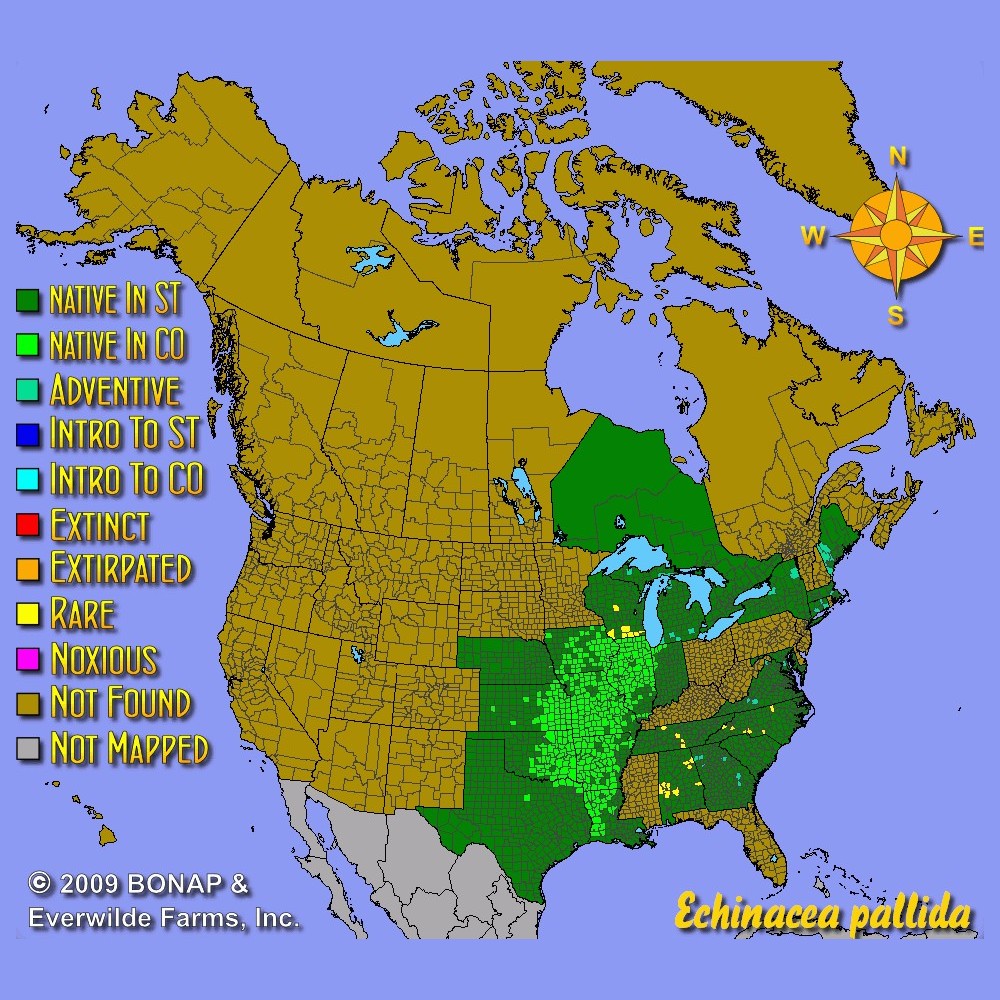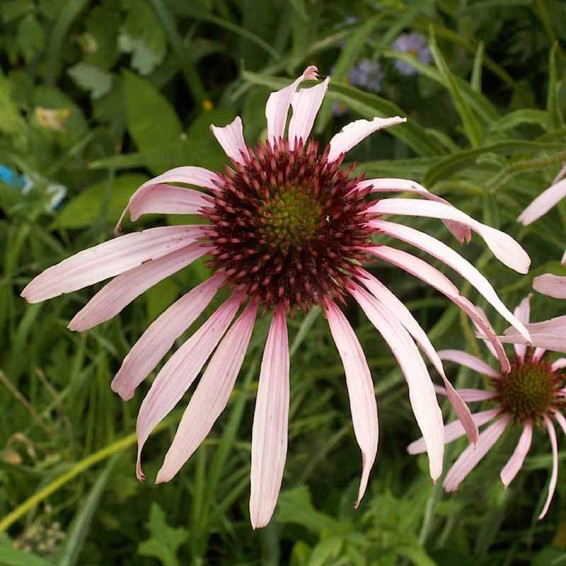Pale Purple Coneflower Seeds
- HOW TO GROW
- FAST FACTS
- REVIEWS
HOW TO GROW
Sowing: Direct sow in late fall, planting pale purple coneflower seeds 1/4" deep and lightly compacting the soil. For spring planting, mix Echinacea Pallida seeds with moist sand and store them in the refrigerator for 90 days before direct sowing; keep the soil consistently moist until germination. Thin or transplant the seedlings.
Growing: Water seedlings until they become established. Mature plants tolerate drought well, and need well-drained soil for healthy growth. Deadheading will greatly increase blooming. After several years of growth, mature plants can be divided in late fall. This plant attracts birds, butterflies and bees as well as resisting deer.
Harvesting: For fresh flowers, cut long stems of flowers that have just opened and place them in water immediately; strip the leaves that will fall below the water.
Seed Saving: After flowering, the central cones of the flowers will develop into a spiky seed head. Since songbirds such as goldfinches love to eat these seeds, they should be harvested as soon as possible to avoid loss. As soon as the pale purple coneflower seeds easily come loose from the head, cut off the seed heads. Rub them lightly to remove the seed, and store the seed in a cool, dry place.
FAST FACTS
Common Names: Pale Coneflower, Pink Coneflower, Tall Coneflower, Black Sampson
Latin Name: Echinacea pallida
Species Origin: US Native Wildflower
Type: Native Wildflowers
Life Cycle: Perennial
USDA Zones: 4, 5, 6, 7, 8, 9
US Regions: Plains/Texas, Midwest, Northeast, Southeast
Seeds per Ounce: 6,200
Stratification: Cold/Wet for 12 Weeks
Germination Ease: Stratify 12 Weeks
Sunlight: Full Sun, Part Sun
Height: 36 Inches
Color: Pink, Purple
Bloom Season: Blooms Early Summer, Blooms Late Summer
Uses: Attracts Pollinators, Attracts Honeybees, Attracts Butterflies, Hummingbirds, Cut Flowers, Deer Resistant
Pale But Powerful
This is a tall, stately, pale pink-lavender coneflower. It will winter well and will drop cold hardy seed for more seedlings in the spring. The dark seed cone attracts pollinators easily. Beautiful for end of season blooms in September too.
Very happy
Everything went smoothly and i recieved the seeds in a timely manner. These flowers will excellent editions to my garden.
DESCRIPTION

HOW TO GROW
Sowing: Direct sow in late fall, planting pale purple coneflower seeds 1/4" deep and lightly compacting the soil. For spring planting, mix Echinacea Pallida seeds with moist sand and store them in the refrigerator for 90 days before direct sowing; keep the soil consistently moist until germination. Thin or transplant the seedlings.
Growing: Water seedlings until they become established. Mature plants tolerate drought well, and need well-drained soil for healthy growth. Deadheading will greatly increase blooming. After several years of growth, mature plants can be divided in late fall. This plant attracts birds, butterflies and bees as well as resisting deer.
Harvesting: For fresh flowers, cut long stems of flowers that have just opened and place them in water immediately; strip the leaves that will fall below the water.
Seed Saving: After flowering, the central cones of the flowers will develop into a spiky seed head. Since songbirds such as goldfinches love to eat these seeds, they should be harvested as soon as possible to avoid loss. As soon as the pale purple coneflower seeds easily come loose from the head, cut off the seed heads. Rub them lightly to remove the seed, and store the seed in a cool, dry place.
FAST FACTS
Common Names: Pale Coneflower, Pink Coneflower, Tall Coneflower, Black Sampson
Latin Name: Echinacea pallida
Species Origin: US Native Wildflower
Type: Native Wildflowers
Life Cycle: Perennial
USDA Zones: 4, 5, 6, 7, 8, 9
US Regions: Plains/Texas, Midwest, Northeast, Southeast
Seeds per Ounce: 6,200
Stratification: Cold/Wet for 12 Weeks
Germination Ease: Stratify 12 Weeks
Sunlight: Full Sun, Part Sun
Height: 36 Inches
Color: Pink, Purple
Bloom Season: Blooms Early Summer, Blooms Late Summer
Uses: Attracts Pollinators, Attracts Honeybees, Attracts Butterflies, Hummingbirds, Cut Flowers, Deer Resistant
Reviews
Review
Pale But Powerful
This is a tall, stately, pale pink-lavender coneflower. It will winter well and will drop cold hardy seed for more seedlings in the spring. The dark seed cone attracts pollinators easily. Beautiful for end of season blooms in September too.
Review
Very happy
Everything went smoothly and i recieved the seeds in a timely manner. These flowers will excellent editions to my garden.






